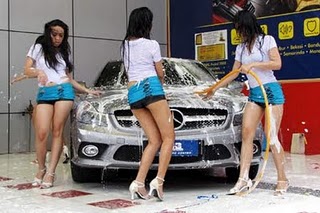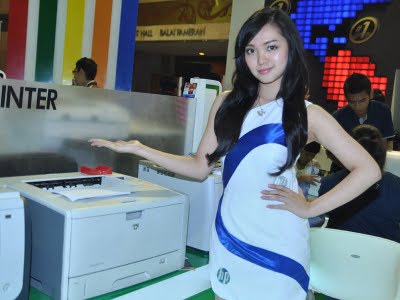Pagani Huayra Makes its U.S. Debut in Los Angeles
Monday, August 8, 2011 by admin
What really gets me about the Pagani Huayra are the leaf-like side mirrors, glancing away from the bodywork like errant shots on goal. These flourishes are within the European artistic tradition, bringing to mind Picasso’s crazy faces or Modigliani’s stretched women. When everybody else is trying to make mirrors disappear for aerodynamic purposes, replacing them with rear-facing video cameras, Horacio Pagani, a short guy with a great head of silver hair and a penchant for quoting Leonardo da Vinci, comes along and sticks out mirrors so they can cleanse California hillsides of skateboarders.
Of course, the rest of the Huayra really gets me, too. First of all, there’s the fact that the name Huayra is pronounced “WHY-ra,” as if someone’s challenging the Egyptian deity. As it turns out, although the car is made in Modena, using up a lot of electricity to bake its carbon fiber chassis, Pagani himself is originally from Argentina, where he would’ve learned about the Andean god of wind, Huayra Tata.
 Rather than Huayra commanding the waters of Lake Titicaca to rain down upon the parched earth, what we got Thursday at the mid-engine supercar’s North American debut at Pasadena’s Art Center College of Design was a good, close look at one of the most OCD roadburners this side of a Chip Foose streetrod.
Rather than Huayra commanding the waters of Lake Titicaca to rain down upon the parched earth, what we got Thursday at the mid-engine supercar’s North American debut at Pasadena’s Art Center College of Design was a good, close look at one of the most OCD roadburners this side of a Chip Foose streetrod.
While the exterior suggests snippets of McClaren and Panoz, the cockpit and engine bay offer more originality. Specifically, the instrument panel suggests the cosmic pileup between a Wurlitzer jukebox and a jewelry shop. And the powerplant, a twin-turbo 6.0-liter V-12 supplied by Mercedes-AMG, seems to have been commissioned by a Medici prince.
Reading about the Huayra, which made its debut last March at Geneva, you’re probably asking: How much power, how fast, and how much moola?
Answers: more than 700 hp and 230 mph, and as high as $1.4 million if instead of paint you want the all-carbon finish, which takes an extra three weeks to perfect.
The first Huayra is said to be destined for a Swiss buyer this November. (Why do Swiss buyers always emerge in situations like this?) Certification for U.S. sales is under way, and deliveries are expected in 2012.
Pagani’s staff of sixty can produce thirty or so of these cars per year. With two American dealers so far, both in California, don’t expect to see a Huayra on the street anytime soon unless you live in Beverly Hills or Sausalito. But Pagani asserts that with his company’s independence, the support it receives from important technical partners, and its integrated operations, the seven years he’s put into the Huayra will pay off. Whereas other boutique manufacturers may think that computer-controlled devices can grind out perfection, Pagani’s point is that extraordinarily good artistic taste, like Leonardo’s, is part of the formula, too.
Of course, the rest of the Huayra really gets me, too. First of all, there’s the fact that the name Huayra is pronounced “WHY-ra,” as if someone’s challenging the Egyptian deity. As it turns out, although the car is made in Modena, using up a lot of electricity to bake its carbon fiber chassis, Pagani himself is originally from Argentina, where he would’ve learned about the Andean god of wind, Huayra Tata.

While the exterior suggests snippets of McClaren and Panoz, the cockpit and engine bay offer more originality. Specifically, the instrument panel suggests the cosmic pileup between a Wurlitzer jukebox and a jewelry shop. And the powerplant, a twin-turbo 6.0-liter V-12 supplied by Mercedes-AMG, seems to have been commissioned by a Medici prince.
Reading about the Huayra, which made its debut last March at Geneva, you’re probably asking: How much power, how fast, and how much moola?
Answers: more than 700 hp and 230 mph, and as high as $1.4 million if instead of paint you want the all-carbon finish, which takes an extra three weeks to perfect.
The first Huayra is said to be destined for a Swiss buyer this November. (Why do Swiss buyers always emerge in situations like this?) Certification for U.S. sales is under way, and deliveries are expected in 2012.
Pagani’s staff of sixty can produce thirty or so of these cars per year. With two American dealers so far, both in California, don’t expect to see a Huayra on the street anytime soon unless you live in Beverly Hills or Sausalito. But Pagani asserts that with his company’s independence, the support it receives from important technical partners, and its integrated operations, the seven years he’s put into the Huayra will pay off. Whereas other boutique manufacturers may think that computer-controlled devices can grind out perfection, Pagani’s point is that extraordinarily good artistic taste, like Leonardo’s, is part of the formula, too.








